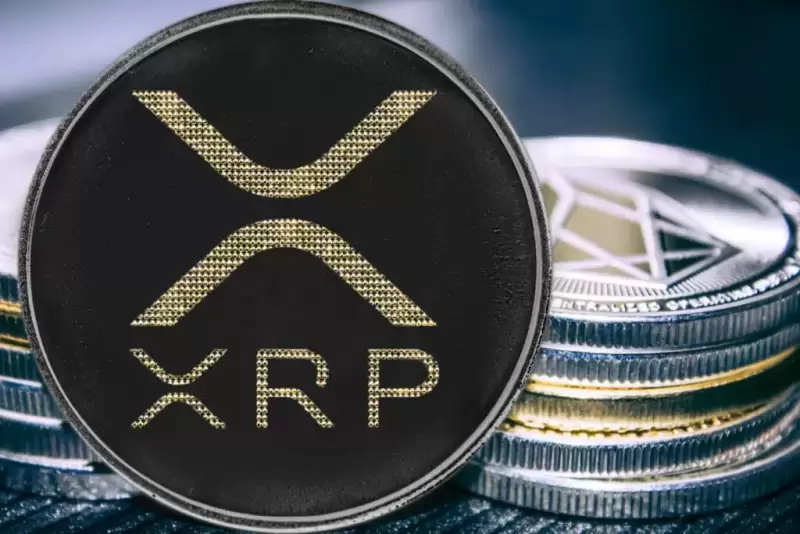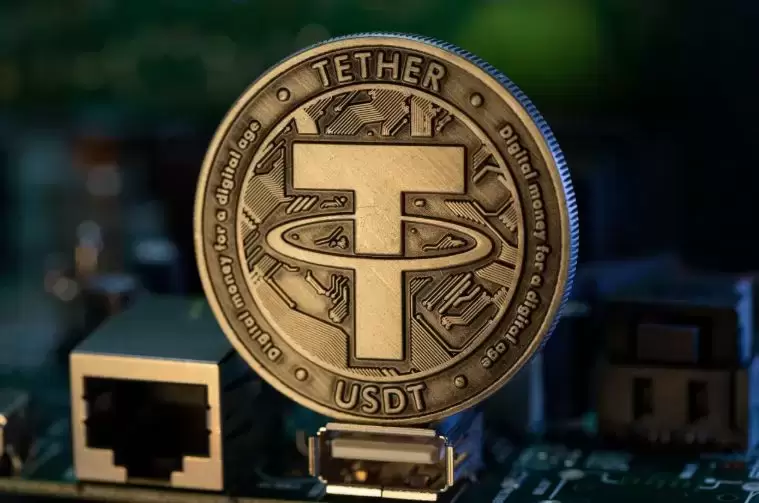 |
|
 |
|
 |
|
 |
|
 |
|
 |
|
 |
|
 |
|
 |
|
 |
|
 |
|
 |
|
 |
|
 |
|
 |
|
以太坊正在掙扎,因此,分散的金融(DEFI)遭受了苦難。第2層(L2)溶液的流動性破裂
Layer-2 solutions for Ethereum have failed to deliver on their promise of scaling the network and have instead fractured liquidity, rendering capital inefficient. As a result, many in the crypto community are searching for greener pastures.
以太坊的第2層解決方案未能兌現其擴展網絡的承諾,而是使流動性破裂,使資本效率低下。結果,加密社區中的許多人都在尋找更綠色的牧場。
However, Solana, which many have pointed to as an alternative, has seen its ecosystem overrun by memecoins, which are used for pump-and-dump schemes, liquidity extraction and fraud.
但是,許多人指出的索拉納(Solana)已將其生態系統覆蓋為Memecoins,該生態系統被用於泵送和降低計劃,流動性提取和欺詐。
The only network that can sustain the next evolution of decentralized finance aligns with Satoshi’s original vision of a decentralized financial system and is being powered by the most trusted and decentralized network in the digital economy — Bitcoin.
唯一能夠維持分散財務與Satoshi對分散金融體系的原始願景的下一個進化的網絡,並且由數字經濟中最受信任和最轉化的網絡提供動力 - 比特幣。
Ethereum was once the undisputed home of decentralized finance, but today, it’s clear that the ecosystem is struggling. The network’s roadmap is constantly changing, and there’s no clear path toward long-term sustainability.
以太坊曾經是分散財務的無可爭議的故鄉,但今天,很明顯,生態系統正在掙扎。該網絡的路線圖正在不斷變化,並且沒有通往長期可持續性的明確途徑。
Layer-2 solutions were supposed to scale Ethereum and increase its throughput, and they have certainly achieved that. However, they’ve also fractured DeFi into isolated liquidity silos. While L2s have lowered transaction fees, they now compete for liquidity rather than contributing to a unified financial system.
第2層解決方案應該擴展以太坊並增加其吞吐量,他們當然已經實現了這一目標。但是,他們還將Defi破裂成孤立的流動性孤島。儘管L2降低了交易費用,但他們現在爭奪流動性,而不是為統一的金融體係做出貢獻。
The result? A fragmented landscape that makes capital inefficient and DeFi protocols harder to scale.
結果?一個零散的景觀,使資本效率低下,更符合規程更難擴展。
Ethereum’s proposed solution — chain abstraction — sounds promising in theory but fails in practice. The fundamental issue is a structural misalignment of incentives, and as a result, Ethereum is gradually losing its competitive edge in DeFi.
以太坊提出的解決方案 - 鏈的抽象 - 理論上聽起來很有希望,但在實踐中失敗了。基本問題是激勵措施的結構錯位,因此,以太坊逐漸失去了其在Defi中的競爭優勢。
It’s time to ask: Can DeFi’s future lie in a fragmented Ethereum?
是時候問:Defi的未來可以在於零散的以太坊嗎?
Solana has seen an 83% increase in developer activity year-over-year, and its decentralized exchanges have outperformed Ethereum’s for five consecutive months. However, there’s a fundamental problem: Solana’s DeFi growth isn’t built on sustainable financial applications — it’s fueled by a memecoin frenzy.
Solana的開發人員活動同比增長了83%,其分散交易所連續五個月超過以太坊的交流。但是,存在一個基本問題:Solana的Defi增長不是基於可持續財務應用的建立,而是由Memecoin Frenzy推動的。
The recent surge in activity isn’t driven by innovation in decentralized finance but by speculative trades. Following the TRUMP memecoin craze, the total extracted value from Solana’s memecoins ranged between $3.6 billion and $6.6 billion. This isn’t DeFi growth — it’s a liquidity extraction engine where short-term speculators cash in and move on.
最近的活動激增並非由分散財務的創新驅動,而是由投機行業驅動。在特朗普的紀念物熱潮之後,從索拉納(Solana)的紀念物中提取的總價值在36億至66億美元之間。這不是Defi增長 - 這是一種流動性提取引擎,短期投機者可以兌現並繼續前進。
Solana has real strengths. Its speed and low transaction costs make it ideal for high-frequency trading, and its ecosystem has made meaningful strides in decentralized physical infrastructure networks (DePINs), AI and decentralized science, or DeSci. But the dominance of memecoin speculation has turned the chain into a playground for fraud and pump-and-dump schemes. That’s not the foundation DeFi needs.
Solana具有真正的優勢。它的速度和低交易成本使其非常適合高頻交易,並且其生態系統在分散的物理基礎設施網絡(DEPIN),AI和分散的科學或Desci中取得了有意義的進步。但是,Memecoin猜測的主導地位將鏈條變成了一個欺詐和泵送計劃的操場。那不是基礎的需求。
Solana isn’t the answer if the goal is to build a lasting financial system.
如果目標是建立持久的金融體系,那麼Solana不是答案。
Instead, we need to return to first principles and build DeFi on the original blockchain: Bitcoin — the most trusted, decentralized network backed by the soundest money in the digital economy.
取而代之的是,我們需要返回第一原則,並在原始區塊鏈上建立defi:比特幣 - 比特幣是最受信任的,分散的網絡,由數字經濟中最合理的資金支持。
This isn’t just theoretical. Bitcoin DeFi is already experiencing explosive growth. Consider the numbers: Total value locked (TVL) in Bitcoin DeFi surged from $300 million in early 2024 to $5.4 billion as of Feb. 28, 2025 — a staggering 1,700% increase. The Bitcoin staking sector is dominating, with protocols like Babylon ($4.68 billion TVL), Lombard ($1.59 billion) and SolvBTC ($715 million) leading the charge. This demonstrates the growing demand for Bitcoin to become a productive asset rather than a passive store of value.
這不僅僅是理論上。比特幣Defi已經在經歷爆炸性的增長。考慮數字:比特幣Defi的總價值鎖定(TVL)從2024年初的3億美元增加到截至2025年2月28日的54億美元,增長了1,700%。比特幣的Staking行業占主導地位,巴比倫(46.8億美元的TVL),Lombard(15.9億美元)和SOLVBTC(7.15億美元)等協議領導了這一費用。這表明對比特幣成為生產資產而不是被動價值存儲的需求不斷增長。
Bitcoin-native DeFi isn’t simply copying Ethereum’s playbook — it’s pioneering new financial models. Advancements in the space have introduced dual staking, allowing users to stake BTC alongside native tokens to enhance security and earn yields. Meanwhile, novel approaches to tokenizing Bitcoin’s hashrate turn mining power into collateral for lending, borrowing and staking, further expanding Bitcoin’s financial utility.
比特幣本地Defi不僅僅是複制以太坊的劇本,還開創了新的財務模型。該領域的進步已經引入了雙重積分,使用戶可以將BTC與原始令牌一起存放以提高安全性並賺取收益率。同時,將比特幣的哈希底幣礦業能力轉化為貸款,借貸和積累,進一步擴大比特幣的金融公用事業的新穎方法。
In addition, Ordinals and BRC-20 tokens have driven record-high transaction activity, with inscriptions reaching 66.7 million and generating $420 million in fees — highlighting the growing demand for tokenized assets on Bitcoin.
此外,Ordinals和BRC-20代幣還推動了創紀錄的交易活動,銘文達到6670萬,並產生了4.2億美元的費用 - 強調了對比特幣對標記資產的需求不斷增長。
It is clear that Bitcoin is no longer just digital gold — it’s becoming the foundation for the next phase of decentralized finance.
顯然,比特幣不再僅僅是數字黃金 - 它已成為下一個分散融資的基礎。
The future of DeFi lies with Bitcoin, where incentives align with long-term value creation. Unlike Ethereum’s fragmented model and Solana’s speculative economy, Bitcoin-based DeFi is built on institutional-grade liquidity and sustainable growth.
Defi的未來在於比特幣,激勵措施與長期價值創造相吻合。與以太坊的零散模型和Solana的投機性經濟不同,基於比特幣的DEFI建立在機構級的流動性和可持續增長的基礎上。
As the largest and most liquid crypto asset, Bitcoin boasts a $1.7 trillion market cap and $94 billion in exchange-traded fund (ETF) holdings. Even a fraction of this liquidity migrating into DeFi would be a game-changer. Bitcoin holds over $1 trillion in untapped liquidity and continues to attract strong interest from institutional investors and sovereign wealth funds, with governments already exploring it as a potential reserve asset.
作為最大和最流動的加密資產,比特幣擁有1.7萬億美元的市值和940億美元的交易所基金(ETF)持股。即使是將這種流動性遷移到DEFI的一小部分也會改變遊戲規則。比特幣持有超過1萬億美元的未開發的流動性,並繼續引起機構投資者和主權財富基金的濃厚興趣,政府已經將其作為潛在的儲備資產探索。
Several
一些
免責聲明:info@kdj.com
所提供的資訊並非交易建議。 kDJ.com對任何基於本文提供的資訊進行的投資不承擔任何責任。加密貨幣波動性較大,建議您充分研究後謹慎投資!
如果您認為本網站使用的內容侵犯了您的版權,請立即聯絡我們(info@kdj.com),我們將及時刪除。
-

-

- 特朗普的關稅後,圈子的IPO賠率下降了
- 2025-04-05 10:25:12
- 在特朗普的關稅之後,Circle IPO的賠率下降了,他向國家宣布,這比預期的要多得多,並震撼了市場。
-

- Ripple已將其Stablecoin Rlusd整合到其企業支付平台中
- 2025-04-05 10:20:13
- 該區塊鏈公司表示,精選金融合作夥伴已經在使用Stablecoin來簡化運營並更有效地管理流動性
-

- Vaneck越來越接近推出一個現貨BNB ETF
- 2025-04-05 10:20:13
- 基於Binance Coin(BNB)的美國交易所交易基金(ETF)正越來越接近全球投資管理公司Vaneck的推出。
-

- 總共有16個人主要與加密貨幣市場綁在一起,被命名為福布斯(Forbes)的2025年世界億萬富翁名單。
- 2025-04-05 10:15:12
- 這表明了數字資產行業對全球財富創造的不斷增長。
-

- 比特幣和以太坊記錄糟糕的Q1
- 2025-04-05 10:15:12
- 儘管投資者希望進入新的一年,但在3月30日撰寫本文時,比特幣和以太坊分別下跌了11.95%和45.06%,在第1季度。
-

- Tether在2025年第一季度收購了價值7000萬美元的比特幣(BTC)
- 2025-04-05 10:10:12
- 這項大量投資表明該公司對比特幣長期價值及其在不斷發展的金融環境中的作用的信心。
-

-

- 儘管史詩清算後恢復,XRP,Solana(Sol)和Dogecoin(Doge)表現出均勻的看跌
- 2025-04-05 10:05:12
- 加密市場表現出看漲的潛力,前一天的全球市值增加了2.1%。



























































